The psychology then. None of us hadn’t wondered how we would deal with the ‘head’ stuff. Perhaps boredom. Some thought there might be pressure and ‘angst’ from a ‘shouty’ skipper or watch leader. Cabin fever; locked on board in a confined space for weeks. I’ve talked about the people thing. Perhaps we were lucky with this ‘ship’s company’ or a bit of that and a great contribution from a really well-thought-through watch system because really the atmosphere was always respectful, supportive, really good-humored, and fun. Perhaps a bonus under the psychology (or even psychiatry!) heading were the long quiet night watches where there were deep and meaningful conversations about life, love, and happiness.
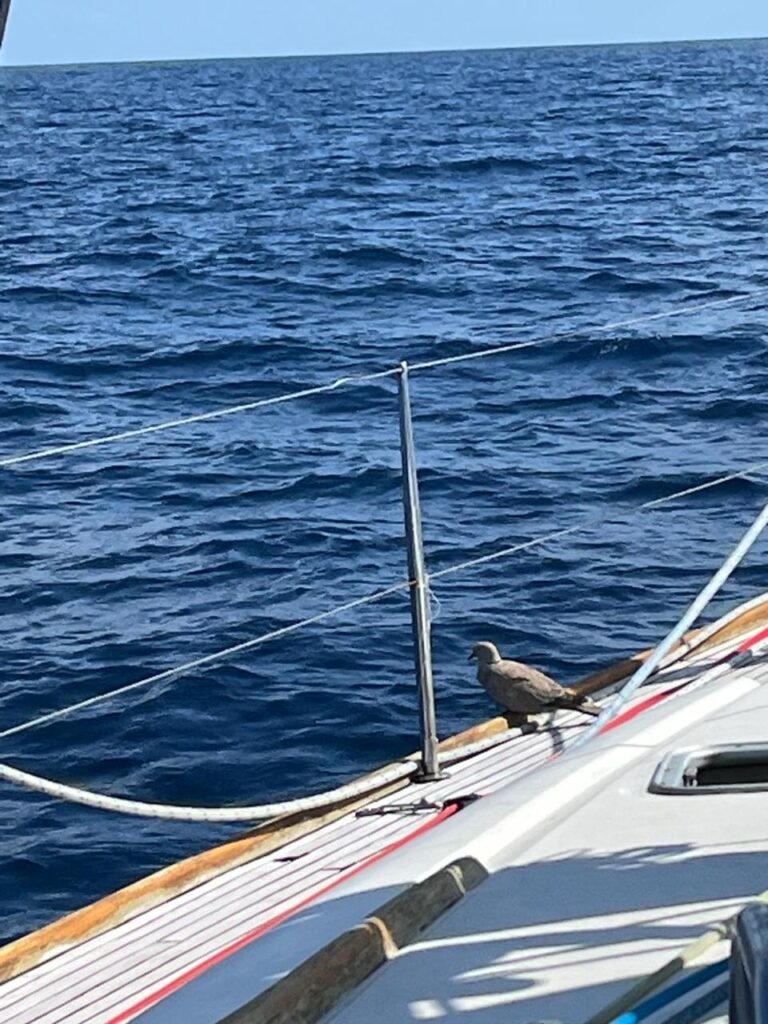


On the second leg, the ship count competition was halted as we sailed onto the longitude of the SW tip of Portugal. We were due to sail near several TSSs (Traffic Separation Schemes), so expected a lot of ships, so sensible to stop before them. Estimates were high and the lowest of 15 won with the count being only 14. Boy did we then see ships?!
So, busy days and nights monitoring vessels passing, practicing nav light recognition, and calculating potential for collision. It reminded me that if you are learning your vessel navigation lights, it’s a real good idea to find one of those Apps or RYA ebooks that allow you to rotate the vessel so you can see the lights from different angles of approach. So often in real life, they don’t look like the flashcards or diagrams in the book. There were far too many to count. Occasionally we would engage on the VHF to thank vessels for making a course alteration for us or once for a radio check and cheekily making a request for a bottle of olive oil to be launched overboard for us to recover. Needless to say, we had run out!
Very exciting to see land, but more exciting to see Spain and Northern Africa simultaneously. It was always going to happen but still an odd concept for someone that hasn’t traveled there or seen it from land or sea.
Conditions for passing through the Straits of Gibraltar were perfect. A good wind behind us and timing to optimize the currents. An amazing tidal phenomenon here. A constant flow of water into the Mediterranean overlaid with the tidal streams; adding to the flow on the flood tide and canceling it out a little on the ebb tide, depending of course whether you are nearer the coast or the middle. Note to self: find someone to explain why and how this happens. Tides are amazing!
We were not only flying up the straits, sometimes with about 3.5 knots of help from the stream but being treated to a really interesting and beautiful coastline on either side. Then the spectacular Rock of Gibraltar that looks so different when you pass it and see it from the east. Then the long run up the Spanish coast finally diverging from the land to head for the gap between Elvira’s and Es Pujols, the two islands of Ibiza.

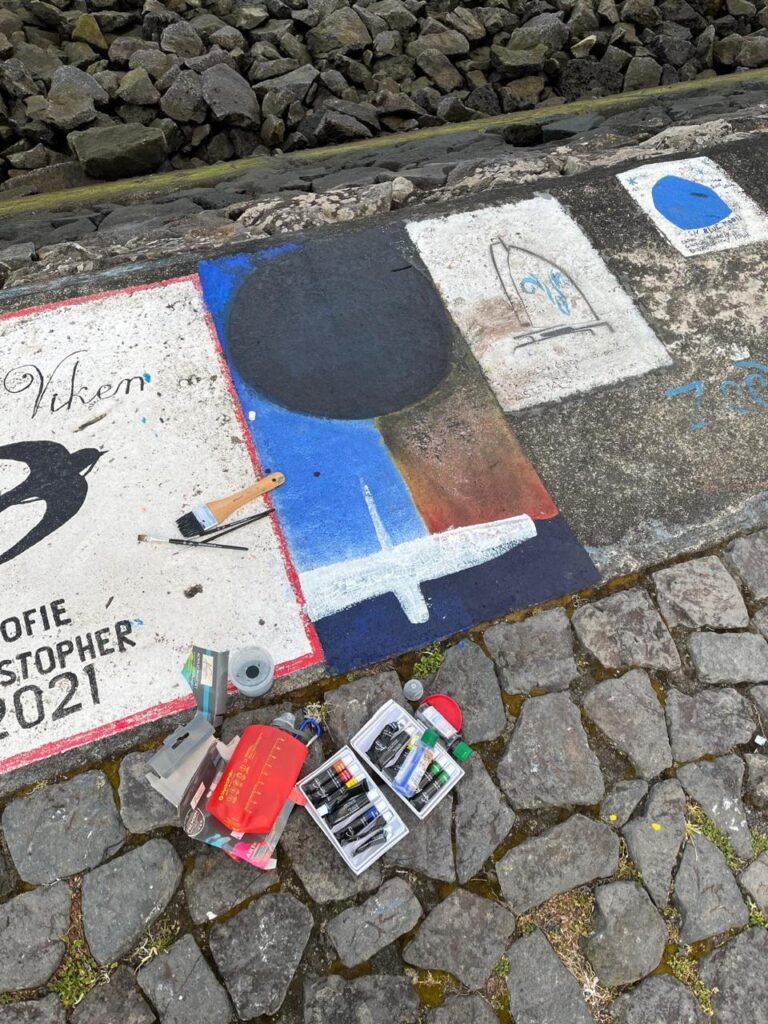

Every sea state has its beauty. As we approached Ibiza, the wind died, and what there was was ‘on the nose’. For the first time in the whole adventure, the engine had to be fired up and our run through Ibiza and on to Mallorca was with a throbbing diesel engine powering us. Its sound drowned the irritating buzz buzz of the autopilot so we could use it to turn helming into lookout duty. Also, for the first time, the sea took on an oily smooth calm that gave the bright moon an opportunity to sparkle off the water so differently from the more turbulent Atlantic. Even after five weeks of looking at it day and night, the waves still had more beauties to offer. I’ve said before I never tire of watching the waves. I’ve tested it for longer than ever in my life, and still, it is true.
Arrival in holiday/vacation-soaked Mallorca was straightforward. After a little hesitance because we were coming in before the designated arrival time, an enthusiastic and welcoming launchman guided us to a spot, and the skipper maneuvered us in perfectly first time to step on to a sunbaked Mallorca.
No real fixes here, just showers, laundry, a few provisions, and an exit from the harbor at 11:10 the next morning, heading off home to Marina Di Pisa.
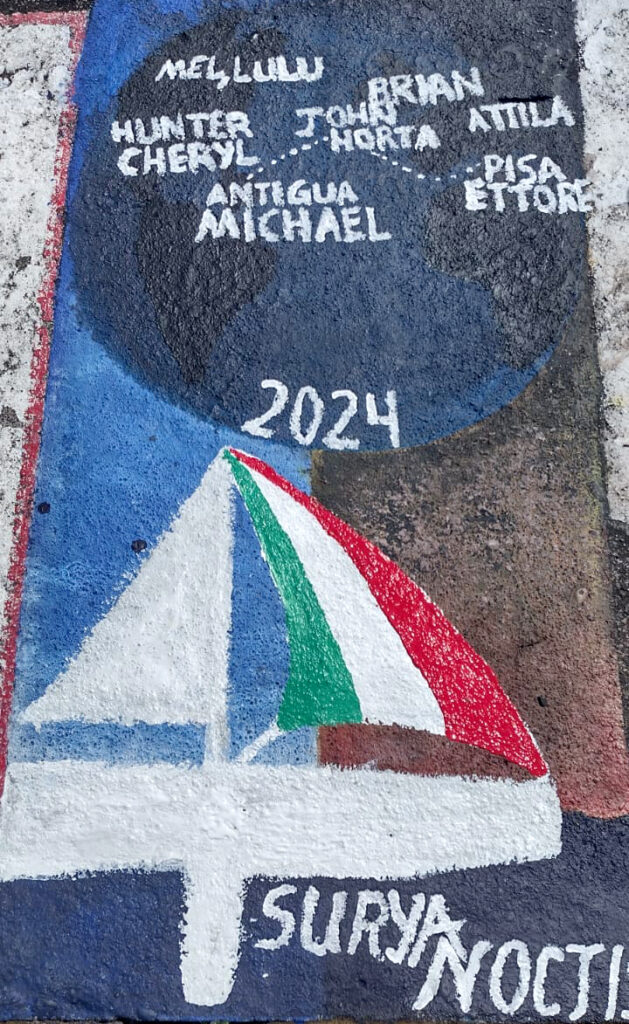
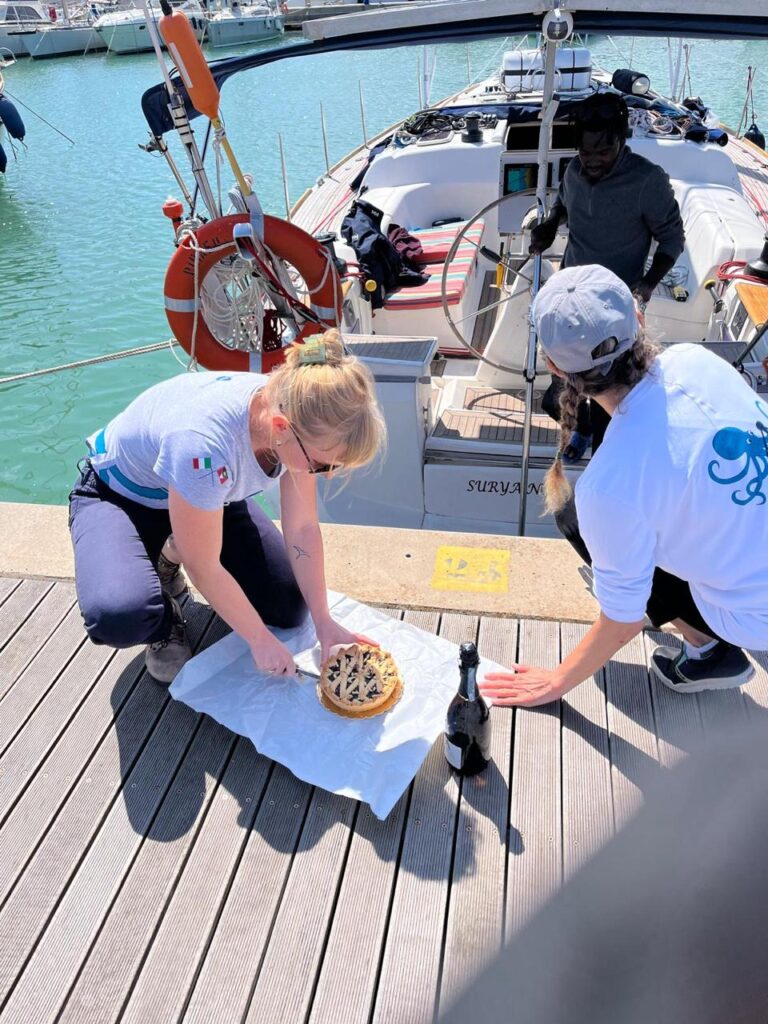
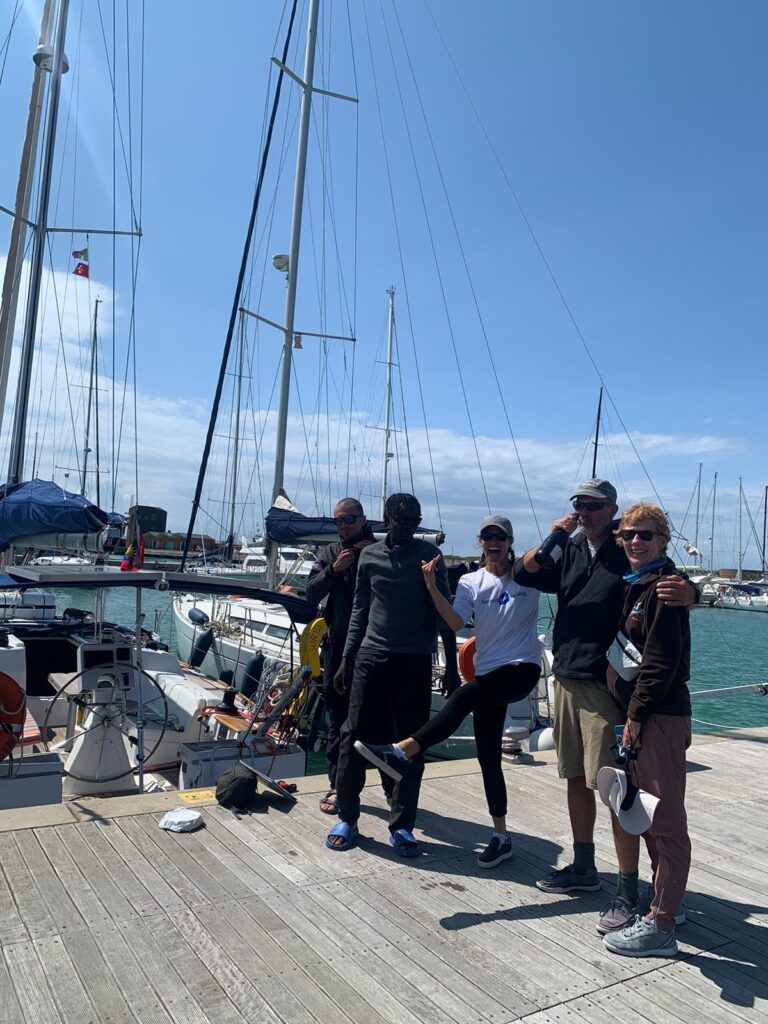
/Brian Deacon – Surya Noctis First Mate, Second Star Sailing cruising and powerboat Instructor/

